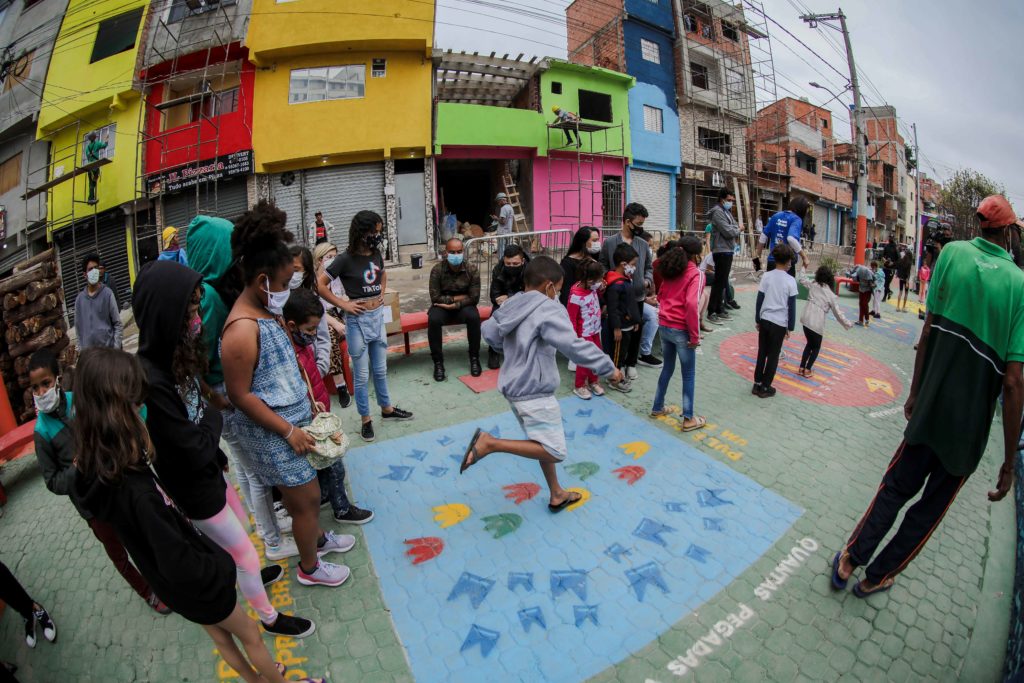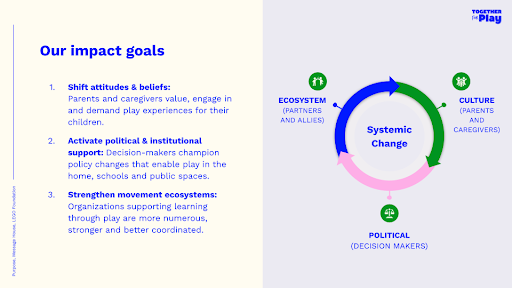1. Collaboration within and outside the sector is key to build movements for playful learning
There are no movements without partnership. Movements require a diversity of people and organizations, who hold a shared vision and work together towards a common goal because no one group can do it alone, and the reach and power of a movement is vastly strengthened by combining the spheres of influence of different organizations and their constituencies.
From international NGOs to community-based service providers and government agencies, it’s all hands-on deck to promote playful learning.
In Colombia we partnered with the Ministry of Science on an original podcast to promote the development of science, innovation and technology through play, and in Brazil we found common cause with G10 Favelas, a group of leaders and social impact entrepreneurs working to advance social and economic progress in urban areas.
Together for Play is working to expand the ecosystem of partners, driving coordinated action across core countries.
Experience has taught us a few critical lessons about collaboration. First, understanding the landscape by taking the time to research and map the issue space, and then finding out where there’s a gap that needs to be filled, is critical to building a healthy ecosystem and defining your role in it. Don’t be afraid to reach beyond the obvious players. Like a Ministry of Science, even when you need to talk about playful learning.
Next, different organizations will always have their own agendas, but find common ground and focus on building collaboration around an intersection of mutual benefit.
Lastly, it is normal for organizations to have varying levels of participation and contribute differently. Just like people, partners need to be met where they’re at when invited to collaborate and given opportunities to contribute that play to their strengths.
2. Grow support by understanding your audience and their needs
An integral part of growing a powerful constituency is two-way communication with those you’re trying to engage or influence.
There is tremendous evidence and literature demonstrating the effectiveness of play-based learning for children, however, most people do not have time to read the white papers. And many people are unaware of how play can contribute to academic success, while helping children develop other critical skills, such as the ability to forge connections and resolve conflicts.
Personal, contextualized, and collective stories can propel public action in powerful ways because they make complex or technical issues relatable and relevant. Together for Play has built awareness about the value of playful learning among our core audience, parents, and caregivers, by sharing stories and messages that tap into existing values and beliefs.
In Colombia, we asked parents to share their own stories about how their children fared in the pandemic, and we responded to their challenges by sending them video tutorials and activities to help them manage pandemic stress and anxiety through play.
Similarly, in Rwanda we reached approximately 1.5 million people (11.6% of the total population) in 2021 through social media by asking parents with large social media followings to create videos of themselves playing with their children. Their followers connected with the traditional games they had played as a child.
A parent who received information through our campaign emailed us, “I work in construction. Playing is very nice. I am a parent of two kids and I am super excited about this platform. It will give us the knowledge we need to raise our children for them to become successful and grow our family. Thank you very much.”


